Dunhuang murals and color-shaped images have rich themes and superb techniques. After thousands of years of cultural accumulation, they have formed an artistic system with distinctive characteristics and orderly inheritance. The "Ink Rhyme Context-Gansu Silk Road Art Treasures Exhibition" hosted by the China Art Museum and the Gansu Provincial Cultural Relics Bureau is being exhibited in the China Art Museum.
The exhibition brings together more than 240 pieces (sets) of Gansu cultural relics and artistic treasures in the Dunhuang Research Institute, Gansu Provincial Museum, Gansu Bamboo and Literature Museum and China Art Museum for the first time. It is divided into two parts: "Book engravings and shinings" and "Painting and shinings and shinings", traces the spiritual roots of traditional art and shows the magnificent atmosphere of the Silk Road civilization.
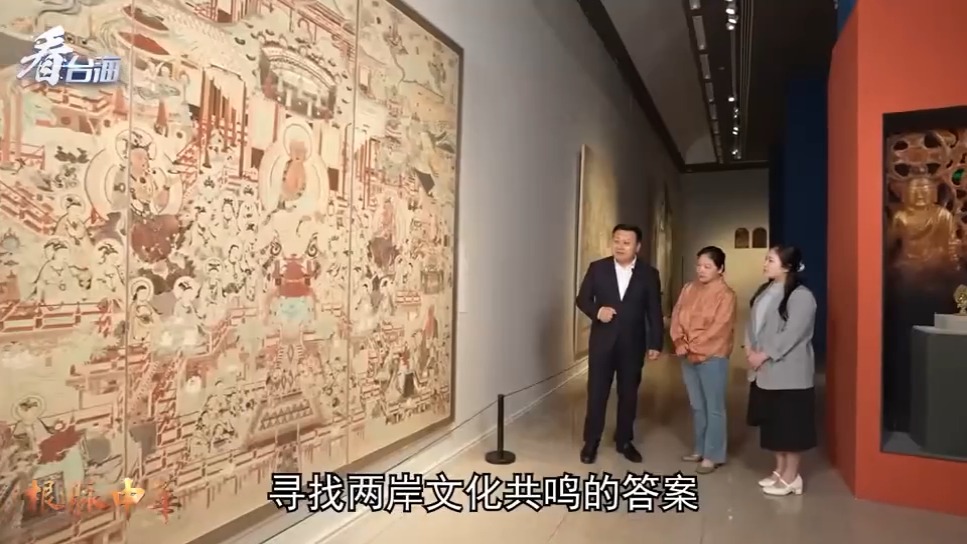
Recently, Dunhuang pattern science researcher Huang Xuanzi and Taiwanese young Zeng Weixuan, led by Pan Yikui, deputy director of the China Art Museum, went to the China Art Museum to find the code of the same origin of culture on both sides of the Taiwan Strait, and felt the ancient and intoxicating long songs of the Silk Road.
The modern transformation of Dunhuang art is not only a passing on the torch of a thousand-year cultural context, but also a renewed vitality of art and culture that is constantly rejuvenating. Since the 20th century, batches of artists have entered Dunhuang, absorbed nourishment from murals and colored sculptures, accumulated a large number of copying and creative works, and enriched and opened up the space for expression of Dunhuang Grottoes art with different media and artistic languages. Deputy Director Pan Yikui first introduced the "Three Rabbits Flying Cabbage" created by Duan Wenjie and Li Fu in 1954 in the Dunhuang Research Institute.
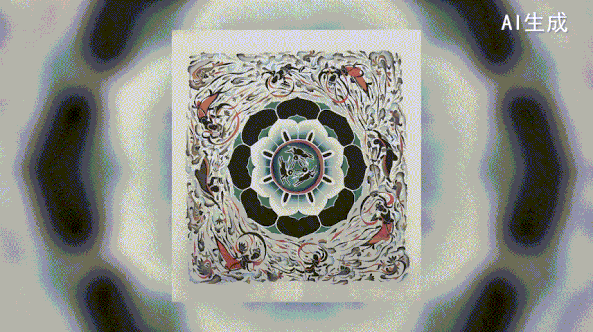
The "Three Rabbits Share the Ears" caisson pattern in Cave 407 can be called the "first of the caisson". This pattern is depicted with three rabbits that run counterclockwise and chase each other. The three rabbits share three ears, heads and tails, and are full of dynamic feeling. In the whole pattern, the rabbit running in the lotus heart and the flying sky flying outside the lotus heart are in the same direction as the spiraling ceiling, as if even the still lotus is rotating.
Huang Xuanzi said that she had been following Mr. Chang Shana to study Dunhuang patterns, so she had the opportunity to see all the three rabbit patterns in Mogao Grottoes and found that most of the rabbits did not have bow ties, but the three rabbits in Cave 407 had bow ties. The bow tie is running and fluttering with the rabbit, allowing the audience to fully feel the works from more than a thousand years ago, and now it is still very contemporary.
Then, Deputy Director Pan Yikui led Huang Xuanzi and Zeng Weixuan to visit two copied works by Mr. Chang Shuhong and Mr. Chang Shana.
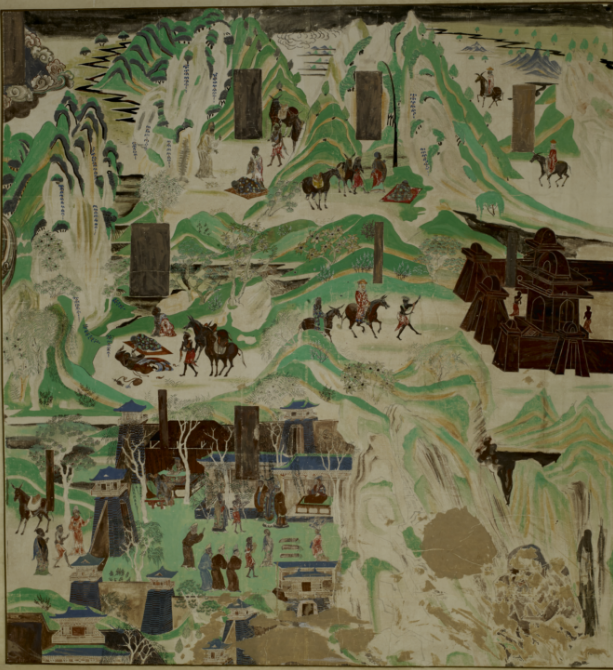
△ Cave 217 The Buddha's Crown Master Dharani Sutra transforms into Buddha Poli Historical Sites Chang Shuhong 171.5×158.5cm 1955 The "Book of the Buddha's Pinnacle Sutra to the Historical Sites of Buddha Poly" was copied and created by Chang Shuhong, the "Guardian God of Dunhuang" in 1955. The picture is based on the preface of the "Book of Buddha Poly" translated by Buddha Poly, and records the reason why Buddha Poly, a monk from the country of Gubin, translated the "Book of Buddha Poly". In the picture, the mountains and rivers are outlined with lines, and the green and green colors should be the green and green landscape painting method recorded in the history of painting, depicting the beautiful Wutai Mountain scene, giving people a relaxed and pleasant visual effect. Deputy Director Pan Yikui introduced that the green landscape painting of this mural in Mogao Grottoes was hundreds of years earlier than Wang Ximeng's "Thousand Miles of Rivers and Mountains".
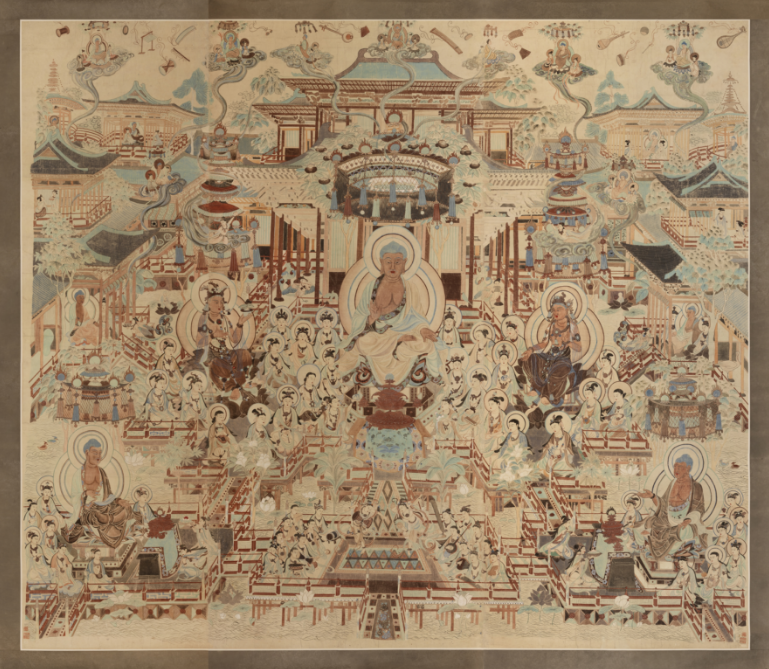
△ Copy Cave 172 of Mogao Grottoes View the Amitabha Sutra Chang Shana Chinese Painting 272cm×300.5cm 1946
"Contemplating the Amitabha Sutra" is a larger work copied by Mr. Chang Shana when he was 15 years old. Cave 172 of the prosperous Tang Dynasty was a cave covered with Douding Cave, and the north and south walls of the cave room were painted to see the Amitabha Sutra. The copy displayed this time comes from the southern wall of this cave. When copying, the skin color of the characters that have turned dark has been restored to their original color. The pictures are covered with pavilions and pavilions, with many characters, and the atmosphere is cheerful and warm, fully demonstrating the solemnity of the Buddha, the softness of the Bodhisattva, the joy of music, and the extraordinary beauty of the Pure Land. This work is not only artistic, but also has high archaeological and research value, and can be studied by the world before and after the weathering of murals. Chang Shana hopes to remind more people to understand and understand Dunhuang's aesthetic art through the presentation of her works.
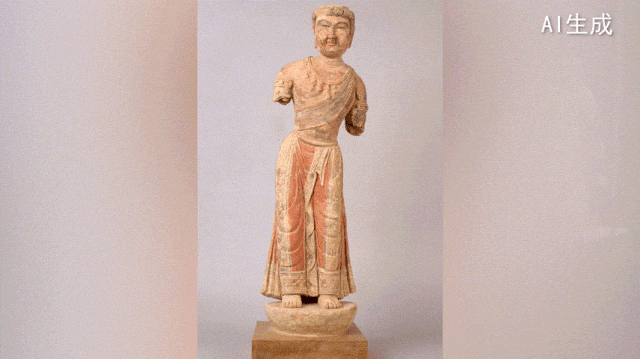
△ Bodhisattva standing statue 20×61cm Collection of the Dunhuang Research Institute of the Tang Dynasty
Subsequently, Deputy Director Pan Yikui led two Taiwanese compatriots to visit the Tang Dynasty Bodhisattva standing statue collected by the Dunhuang Research Institute. This Bodhisattva standing statue has a plump body, a full face, and a brightly decorated dress. The divine nature exudes the aura of the world in its solemnity, and its shape and color are excellent. Deputy Director Pan Yikui introduced that although the hair bun on the Bodhisattva's standing statue is gone and his arms are broken, this cannot conceal the beauty of the sculpture itself and is a work comparable to Venus, the Broken Arm.
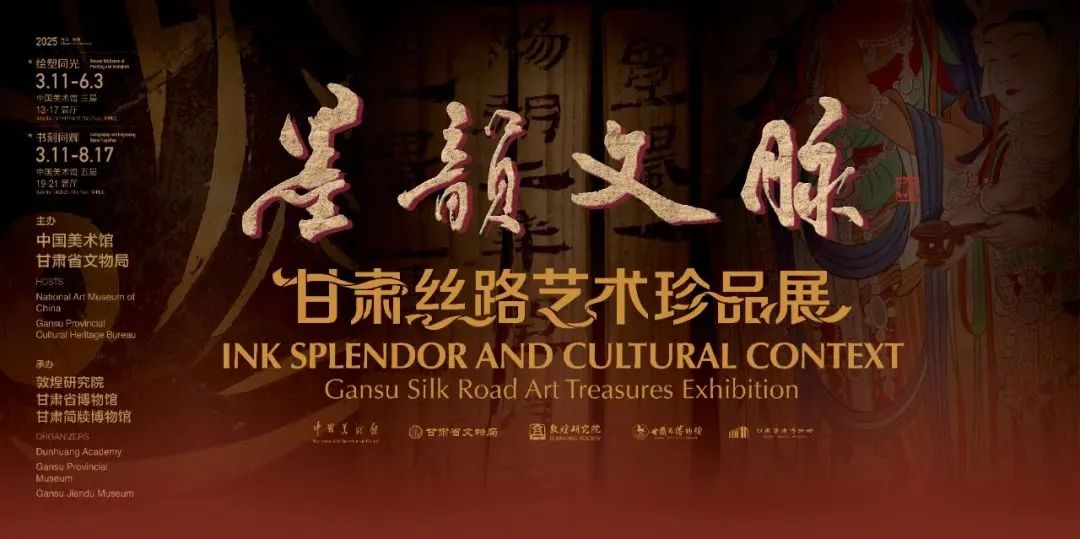
The solemn murals of the Mogao Grottoes in Dunhuang tell the story through grand composition and delicate brushstrokes; the rich color sculptures vividly display the exquisite techniques through compassionate faces and smooth clothing patterns. The simple and concise molded portraits, the complex and beautiful caisson tiles, and the strong and plump mural rock color all convey the passionate pursuit of artistic aesthetics. Taiwan youth Zeng Weixuan sighed: "Now there are professional institutions that study and protect the Mogao Grottoes in Dunhuang, and generations of artists have inherited the excellent traditional Chinese culture. Our culture has never faded, and it has been waiting for us to go home."